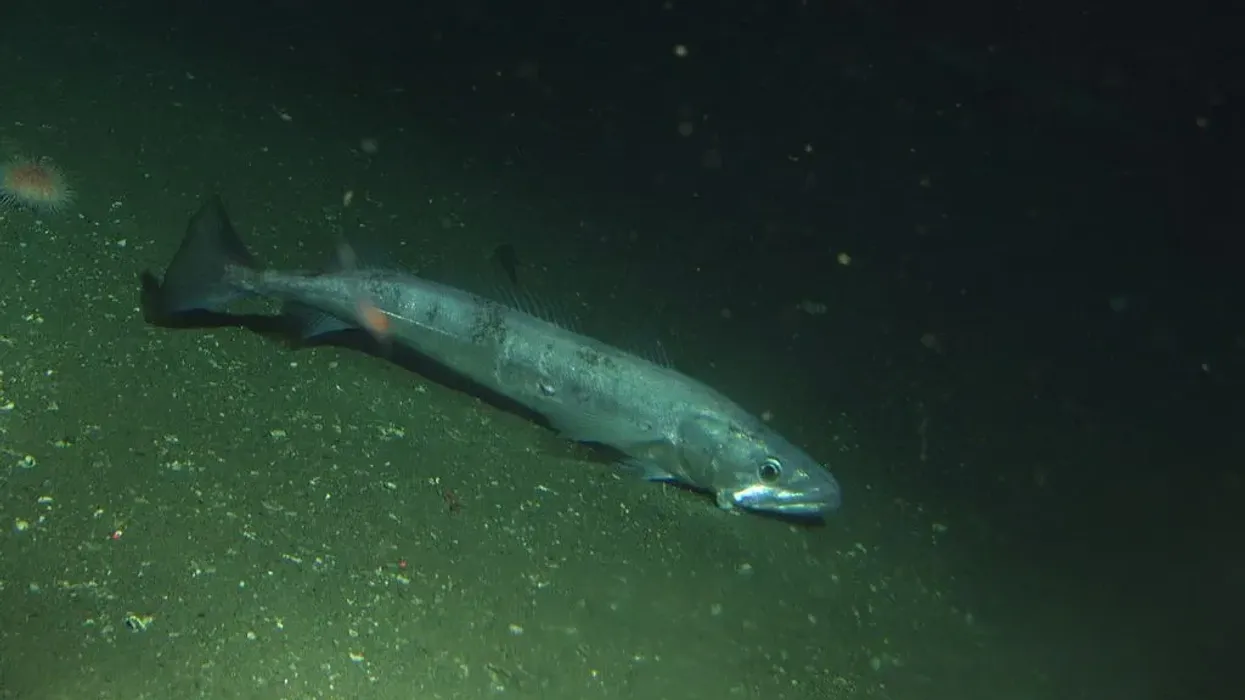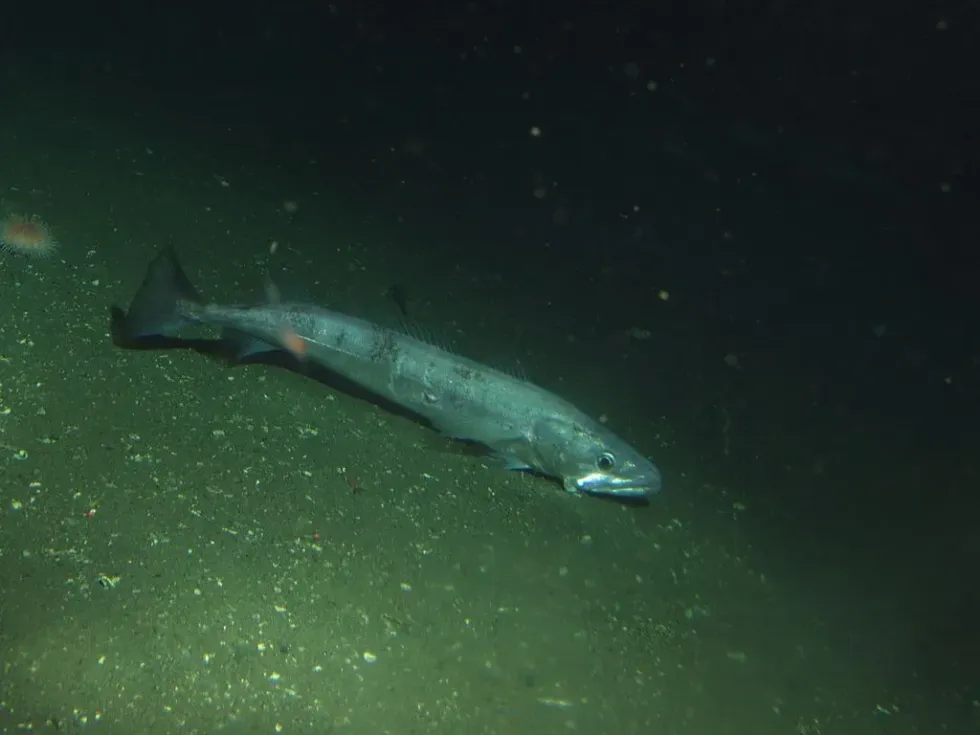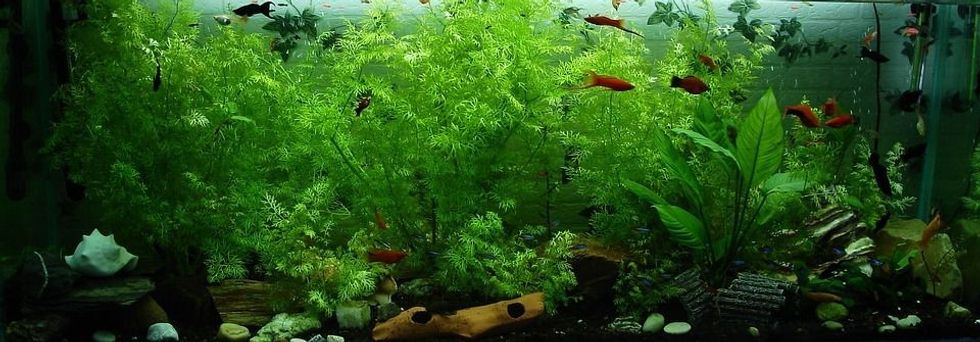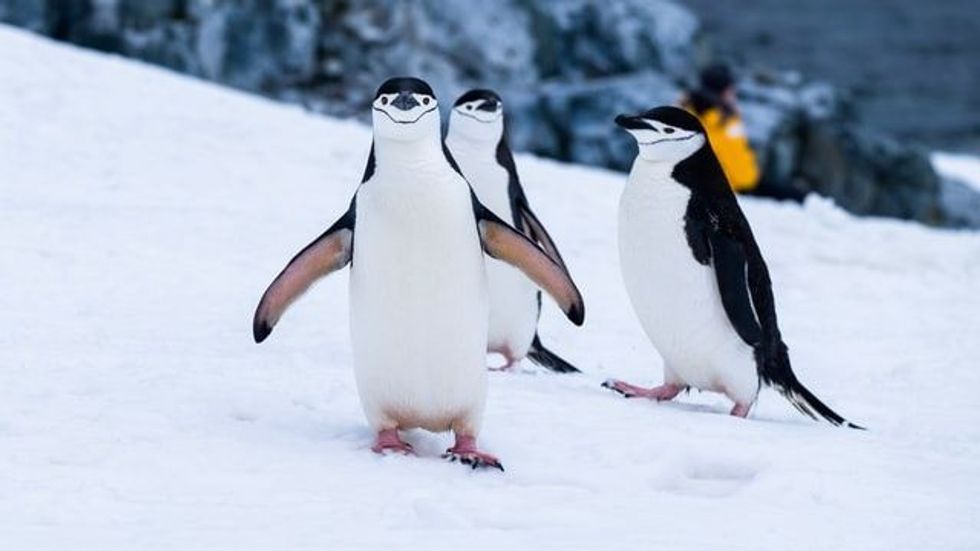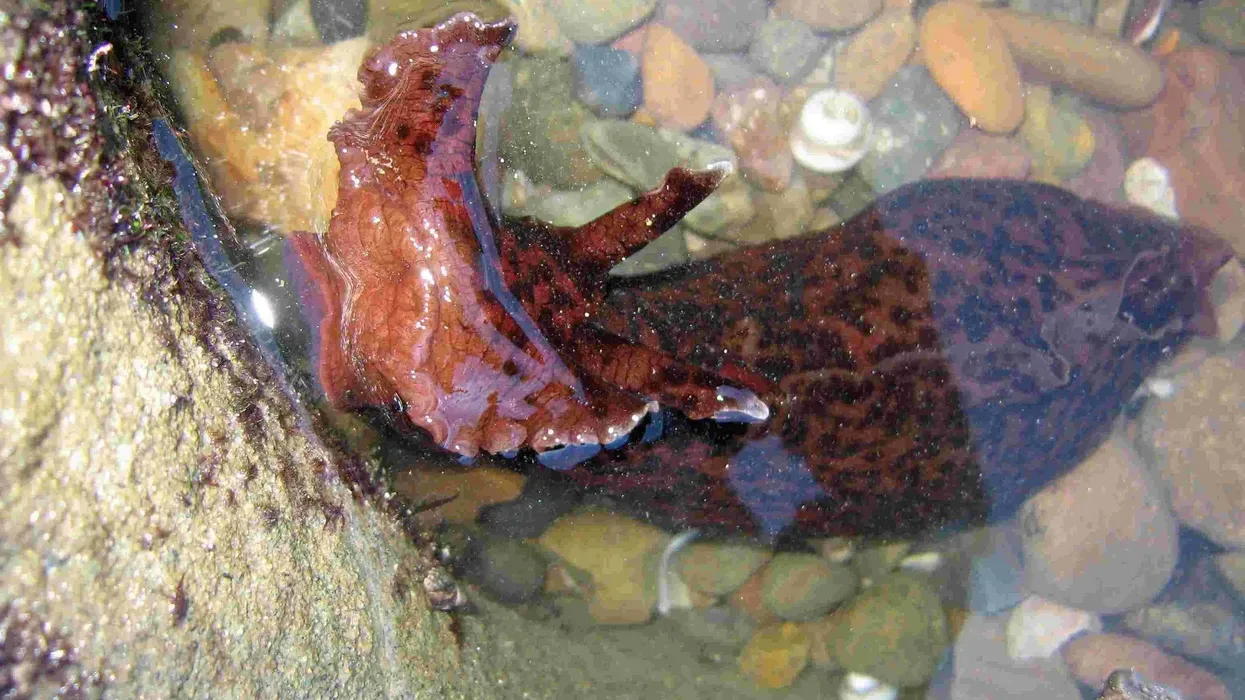Pacific whiting (Merluccius productus) is a fish species that is known by a couple of names such as hake whiting and Pacific hake. While the many names can be quite confusing, the habitat of this species is quite simple.
They prefer to live in muddy or rocky waters in the north-eastern Pacific Ocean and near places such as Canada, central Puget, and California. Their abundant population makes them an easy catch!
The diet of this fish species is carnivorous and it sometimes feeds on planktons. This species is a common seafood along the coastal areas in which it is found due to its mild taste.
In terms of appearance, these fishes are muddy yellow or silvery and have short fins on a body that can be quite big in length. These fishes can also be bred in a fishery, as long as they abide by the guidelines set by the NOAA (National Oceanic and Atmospheric Administration).
One of the fun facts about Pacific whiting fish is that the consumption of these fishes can have a lot of health benefits for you.
For more relatable content, check out these hake facts and oliver flounder facts for kids.
Pacific Whiting Interesting Facts
What type of animal is a Pacific whiting?
The Pacific whiting or hake whiting is a fish, and is also a popular catch in places such as Canada.
What class of animal does a Pacific whiting belong to?
The class that this animal belongs to, in scientific terms, is Actinopterygii. However, this fishery species, in popular language, is classified as a fish.
How many Pacific whitings are there in the world?
There are no conclusive studies that tell us the exact number of Pacific whiting there are in the world. Although, the conservation status, as well as the fact that it is a fishery species, suggests that their population is not declining or under any stress.
Where does a Pacific whiting live?
The Pacific whiting is a fish species that prefers to live in muddy, rocky, or gravel laden waters.
What is a Pacific whiting's habitat?
The habitat of this variety of fish extends from the north-eastern Pacific Ocean and central Puget, to the coasts of Canada and California. These fishes are a popular catch along the Gulf of California.
Who do Pacific whitings live with?
Hake whiting fish are a species of schooling fishes and found in large stocks all along the north-eastern part of the Pacific Ocean.
How long does a Pacific whiting live?
The average lifespan of this amazing sea-dwelling species of fish is more than 15 years.
How do they reproduce?
The Pacific whiting fish or Pacific hake reproduces through spawning, similar to other fish species. The female cuttlefish is capable of laying millions of eggs in a single batch which then float on the surface of water. The breeding season starts in January and finishes in June.
It is also interesting to note that the female Pacific whiting matures later than the male Pacific whiting.
What is their conservation status?
According to IUCN, the conservation status of the Pacific whiting is Least Concern which means that the population of this fish species is not set to see any dip in the near future. There are no immediate threats to their habitat either which suggests that they will be around for recreational and consumption purposes for a long time.
This stable population is due to the tremendous amount of eggs that are laid in each batch, meaning the population is thriving rather than declining. Additionally, they can be bred in a fishery which ensures a stable population.
Pacific Whiting Fun Facts
What do Pacific whitings look like?
The Pacific whiting is a long, slender fish that can be bred in a fishery approved by NOAA. In both their wild habitat in the sea and in any fishery, these marine animals are either muddy yellow in color or silvery. Their fins are short and they have sharp teeth.
* Please note that this is the picture of a King George whiting, and not Pacific whiting. If you have an image of a Pacific whiting, let us know at hello@kidadl.com.

While the Pacific whiting or hake whiting might not fit into the quintessential idea of a cute fish such as the ones that we have at home, some fishing enthusiasts do find them to be exceedingly adorable and worthy of appreciation for their appearance.
They also have quite a compact size and a small mouth region that gives immense happiness when caught by a fisherman or catcher.
How do they communicate?
There are no records that tell us the definite mode of communication that these fishes use in either fisheries (NOAA) or out in their wild sea habitat. It is known that they can sense vibrations and probably use this as a mode of communication.
How big is a Pacific whiting?
The length of the fishery or wild sea variety of this whiting species is around 3 ft (0.91 m).
How fast can a Pacific whiting swim?
There are no records that can tell us the exact speed at which this sea variety of whiting fish can swim, however, we can assume that their predatory nature and long, slender body would allow them to swim at remarkable speeds.
How much does a Pacific whiting weigh?
An adult Pacific hake can reach the weight of around 1.43 lb (650 g).
What are the male and female names of the species?
There are no distinct names for male and female Pacific hake, despite the difference that they have in regards to the age at which they mature. We lovingly refer to these wild, marine or fishery-bred animals as a male Pacific hake and a female Pacific hake.
What would you call a baby Pacific whiting?
There is no definite name for a baby Pacific whiting fish or Pacific hake. We will simply have to refer to this fish as a baby Pacific hake.
What do they eat?
This carnivorous fish of the wild, caught all over the west coast and along the north-eastern Pacific Ocean coastline feed on animals such as crabs, shrimps, cuttlefish, and herrings.
Are they poisonous?
This fish from the north-east Pacific Ocean is not at all poisonous and is a famous catch for the purpose of consumption. They are even bred in fisheries which are regulated by the NOAA. In fact, they have many health benefits.
Would they make a good pet?
It is unlikely that the Pacific whiting fish would make an ideal pet since they are a predatory species and would be a cause of concern for the pet parent if they decide to keep them in the same tank as other fish species.
It is also worth noting that the wild or marine habitat of this fish is hard to mimic as this fish needs to be kept in muddy or rocky waters.
It would be very difficult for the fish to adapt to other situations, if you decide to take a chance with this fish species.
The diet of this fish is purely carnivorous and would be very difficult to keep up with if you wish to treat this species as more than a catch.
For the same reasons as the issues of recreating the rocky, muddy habitat in an aquariam, even breeding this species in fisheries is difficult.
Did you know...
There are many health benefits that we can have from consuming this fish species. One of the health benefits of this popularly caught seafood is that the Pacific hake has the power to control cholesterol in the human body.
The flesh of the Pacific hake or hake whiting is popularly consumed along the West Coast of America, and is known for its mild taste.
Fisheries throughout the West Coast have a set of rules dictated by the NOAA that regulates the keeping of this fish species or breeding it. The fisheries need to abide to the rules regarding the breeding of this wild species, well as whether or not these marine animals are allowed any visitors.
Pacific whiting bones are quite easy to pick which makes them a popular choice of seafood.
Do people eat Pacific whiting?
The Pacific whiting or Pacific hake is a common seafood amongst the people of the West Coast of America. In places such as California, where these marine animals are caught and sold, the species is renowned for its mild taste and the many health benefits that one can get from eating it.
One of the main health benefits of consuming this seafood variety is that it can reduce the chances of heart diseases.
What is Pacific whiting fish used for?
The whiting fish or hake whiting is a common seafood in the parts of the world where it is found such as in the West Coast and Canada. It is used in various products and consumed for the various health benefits it has.
One of the factors that makes this fish a famous catch is the fact that the Pacific whiting taste is mild and sweet. The flesh can be cooked in any way that the catcher or the cook may desire such as grilled, pan-fried, filleted, or baked.
Here at Kidadl, we have carefully created lots of interesting family-friendly animal facts for everyone to discover! Learn more about some other fish from our brown trout facts and Atlantic cod facts pages.
You can even occupy yourself at home by coloring in one of our free printable fishing coloring pages.

